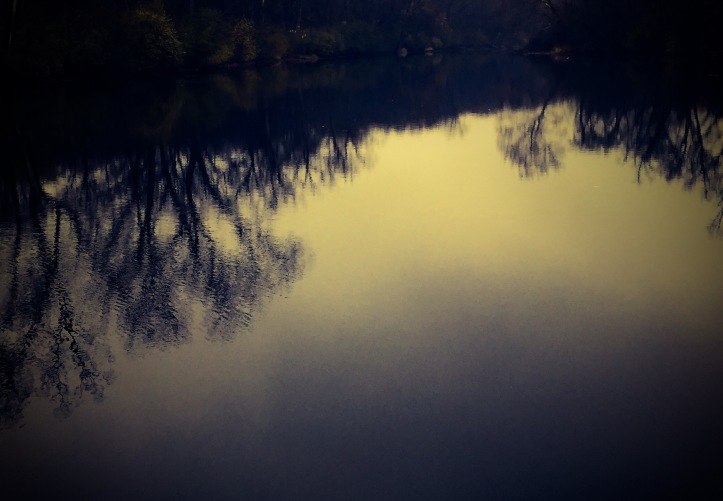“A tree’s wood is also its memoir. . . Misfortunes that cannot be prevented must be endured.” (Lab Girl p. 78)
A November hike along Salt Creek, dodging raindrops, invites me to give thanks. I’m among those lucky enough to notice the leaves falling, the poison ivy making its home along the trunk of a tree, the dirt turning to mud as a quite mist falls, and the mushrooms springing up underfoot. I have an affinity for the natural world, and trees in particular, that I’ve never quite been able to explain, and yet I embrace it gladly!
“Every piece of wood in your house – from the windowsills to the furniture to the rafters – was once part of a living being, thriving in the open and pulsing with sap. If you look at these wooden objects across the grain, you might be able to trace out the boundaries of a couple of rings. The delicate shape of those lines tells you the story of a couple of years. If you know how to listen, each ring describes how the rain fell and the wind blew and the sun appeared every day at dawn.” (p. 79)

My grandfather was a teacher. He worked with his hands, and introduced his young students to the power of creating something through your own physical effort. Delicate trinkets carved from wood, bare wood floors and wooden furniture surrounded me growing up, and I always attributed this environment to several generations of appreciation for the beauty of wood – its strength, its complexity and what is revealed by its grain. As he taught industrial arts, my grandfather passed down a love for the fine art of woodworking.
“A seed knows how to wait. Each beginning is the end of waiting. . . We are each given exactly one chance to be. Each of us is both impossible and inevitable. Every replete tree was first a seed that waited.” (p. 30 – 31)

Given this one chance to live this life, relish these experiences, and share my passions I’ve been blessed with the opportunity to travel. The same appreciation for new experiences that prompts me to explore after a long day at work (rather than retreat to a nondescript hotel room) directs my energies at home and abroad.
“Plants do not travel through space and time as we do: as a rule they do not move from place to place. Instead they travel through time, enduring one event after another, and in this sense, winter is a particularly long trip.” (p. 191)

At the prompting of a dear friend I picked up a book recently, and flipping through its pages has informed my recent exploration, my willingness to embrace adventure, and seek out new ideas wherever I find myself.
“The first real leaf is a new idea. . . Every oak leaf is a unique embellishment of a single rough and incomplete blueprint. . . Every once in a while a plant gets an idea to make a new leaf that changes everything.” (p.63 – 64)

Hope Jahren’s memoir Lab Girl weaves the story of the plant world together with her own memoir, the story of a scientist and respected researcher finding her way into and through the academic world of science.
Her story takes courage to tell, as she struggles with Bipolar Disorder, and pushes though the lowest levels of depression and the most manic episodes.
“It takes a tree only a week to discard its entire year’s work, cast off like a dress barely worn but too unfashionable for further use. Can you imagine throwing away all of your possessions once a year because you are secure in your expectation that you will be able to replace them in a matter of weeks?” (95 – 96)

Can you imagine throwing away all of your possessions once a year because you are secure in your expectation that you will be able to replace them in a matter of weeks? Can you? What would that mean you are letting go of? What would you gain?
Considering this, I walk along Salt Creek, in Oak Brook, Illinois. I make my way from Old Graue Mill, which I’ve been to so many times throughout my childhood and adult life, to Fullersburg Woods Nature, which is new territory for me. The path is quiet, and I’m lured a bit deeper into the trees, following a smaller watery trail that feeds into the creek.
A thick blanket of recently fallen leaves softens my footsteps. The rocks are slick, so I tread carefully. I step over fallen tree limbs, duck under abandoned spider webs, and sidestep moss-covered boulders. I slow down, committing myself to exploring a small patch of woods close to the water, and am thrilled to discover another world. The woods progresses just as it lays in waste. The fallen limbs transform into a new kind of life, an unexpected growth.
“You may think a mushroom is a fungus. This is exactly like believing that a penis is a man. . . The ephemeral mushroom appears briefly above the surface while the webbing that anchors it lives for years within a darker and richer world.” (p. 104)
“[Fungi] have strategically entered into a deep and enduring truce with plants. . . Why are they together? . . . perhaps the fungus can somehow sense that when it is part of a symbiosis, it is also not alone. (p. 104 – 105)
There is community in these woods, between myself and the living creatures there. There is progress in these woods. Nothing is standing still. Everything is changing, transforming minute by minute.
“A vine becomes whatever it needs to be and does whatever it must in order to make real its fabulous pretensions. Vines are not sinister; they are just hopelessly ambitious.” (p. 126)
A short walk in the woods is transformative. There is so much to experience, to learn. Once again I feel as though I am among the fortunate adventurers who embrace the natural world, look deeper to find inspiration, and am rewarded with a sense of exploration that develops into growth and character.
As I travel about I record these experiences because I want to remember them, in order to grow from them. . . or in spite of the.
“[Time] has also convinced me that carefully writing everything down is the only real defense we have against forgetting something important that once was and is no more, including the spruce tree that should have outlived me but did not.” (p. 29)

Consider reading Jahern’s work. Consider opening yourself to the experiences that the natural world offers. . . every single day. Don’t wait to travel to a new place in order to look at your surroundings with wonder, and curiosity. Don’t think for a minute that these trees, these creeks and these slithering, crawling and hibernating critters don’t have a world of information to offer up, if you are searching for it.
Join me on my next adventure,
Kat
Related Links:
Lab Girl: An Homage to the Wonders of All Things Green (on NPR): http://www.npr.org/2016/04/22/475228342/lab-girl-an-homage-to-the-wonders-of-all-things-green
Fullersburg Woods Nature Education Center: http://www.dupageforest.com/Education/Education_Centers/Fullersburg_Woods_Nature_Education_Center.aspx
Old Graue Mill: http://www.grauemill.org/
Salt Creek: http://www.encyclopedia.chicagohistory.org/pages/1111.html









So beautifully written and experienced. Spectacular photos. You should include Hope Jahrens in your contacts. She would be honored by your use of her work.
Blog On.
LikeLike
[…] Source: Memoir of a Fallen Tree: a Stroll Along Salt Creek Prompts Reflection on Hope Jahren’s “… […]
LikeLike
[…] I was inspired by this book to head outdoors, to really look at nature up close, in the cold chill of Thanksgiving weekend. In November, “Accidental Wanderlust” posted Memoir of a Fallen Tree: a Stroll Along Salt Creek Prompts Reflection on Hope Jahren’s “Lab Girl”: https://kathleenodowd.wordpress.com/2016/11/29/memoir-of-a-fallen-tree-a-stroll-along-salt-creek-pro… […]
LikeLike